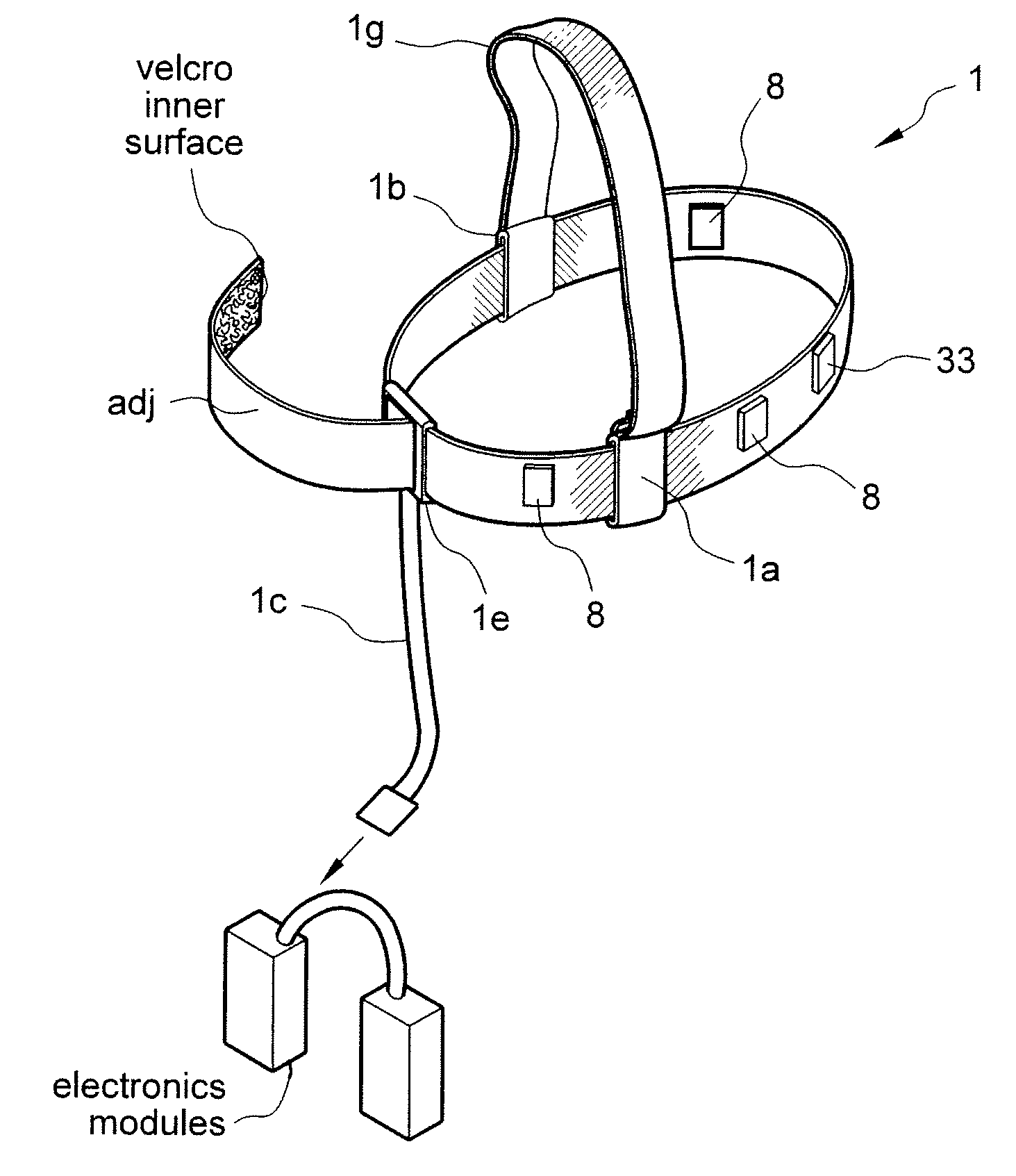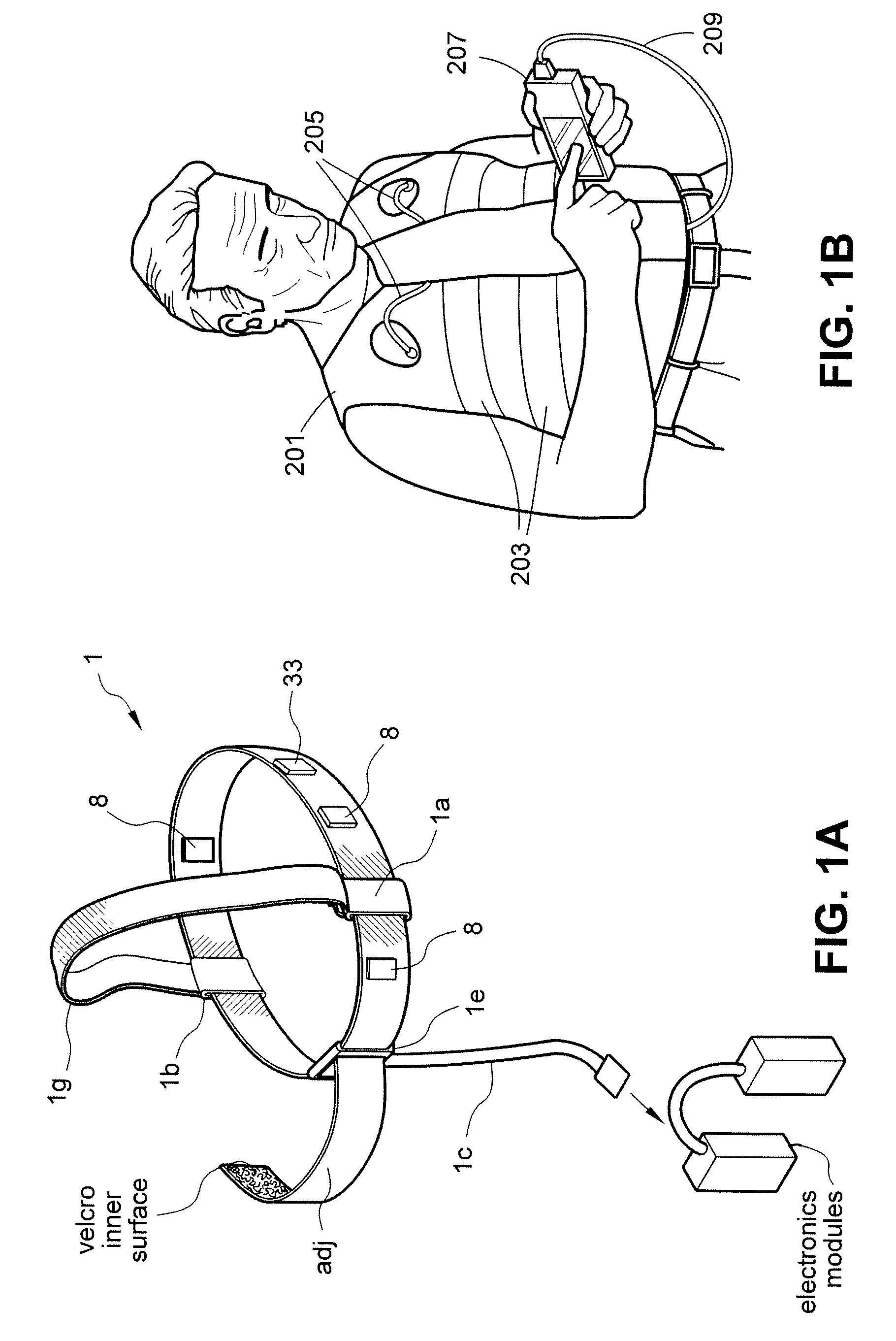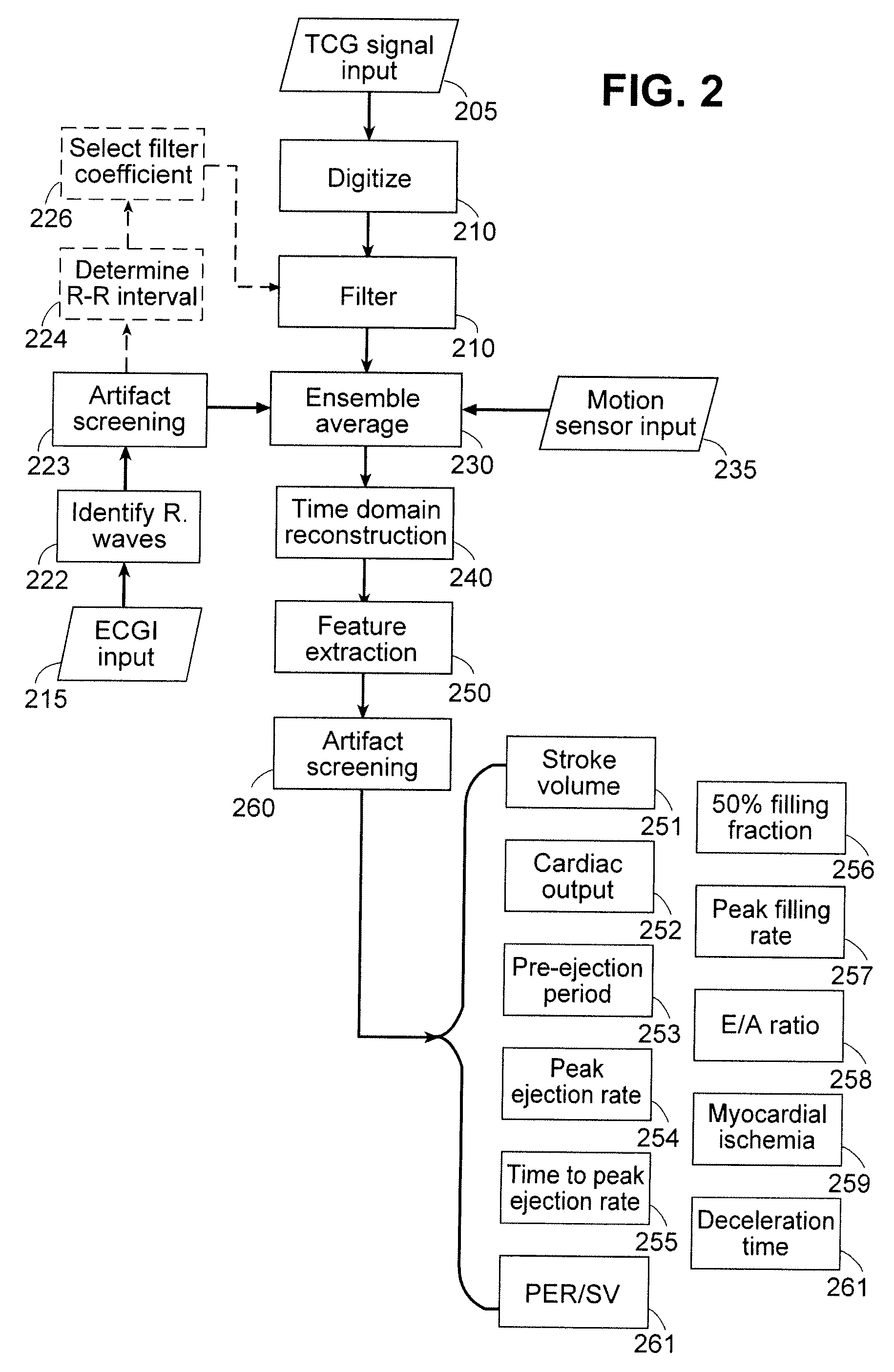Method and system for extracting cardiac parameters from plethysmographic signals
a plethysmographic signal and cardiac parameter technology, applied in bioelectric signal measurement, medical science, diagnostics, etc., can solve the problems of high inconvenient and burdensome, inconvenient and burdensome to varying degrees, and require highly trained medical personnel
- Summary
- Abstract
- Description
- Claims
- Application Information
AI Technical Summary
Benefits of technology
Problems solved by technology
Method used
Image
Examples
example
[0111] This example provides a clinical comparison and validation of the TCG against the cardiokymograph (CKG).
[0112] The CKG, first described in 1967 as the displacement cardiograph, is a noninvasive measurement device and method that provide an analog electrical signal representing cardiac wall motion. Specifically, non-invasive CKG measurements were made during actual stress tests (stress CKG) and observed wall motions of Types II and III were considered to be abnormal. Subsequently, the presence of absence of myocardial ischemia was determined by independent methods. The conclusion was that abnormal cardiac wall motion detected by the CKG reliably predicts coronary arterial disease. Stress CKG was 74% sensitive and 94% specific while stress ECG testing which was 59% sensitive and 69% specific. See, e.g., Silverberg et al., Noninvasive diagnosis of coronary artery disease: the cardiokymographic stress test., Circulation. 1980 Mar; 61 (3):579-89.
[0113] The TCG has been demonstra...
PUM
 Login to View More
Login to View More Abstract
Description
Claims
Application Information
 Login to View More
Login to View More - R&D
- Intellectual Property
- Life Sciences
- Materials
- Tech Scout
- Unparalleled Data Quality
- Higher Quality Content
- 60% Fewer Hallucinations
Browse by: Latest US Patents, China's latest patents, Technical Efficacy Thesaurus, Application Domain, Technology Topic, Popular Technical Reports.
© 2025 PatSnap. All rights reserved.Legal|Privacy policy|Modern Slavery Act Transparency Statement|Sitemap|About US| Contact US: help@patsnap.com



